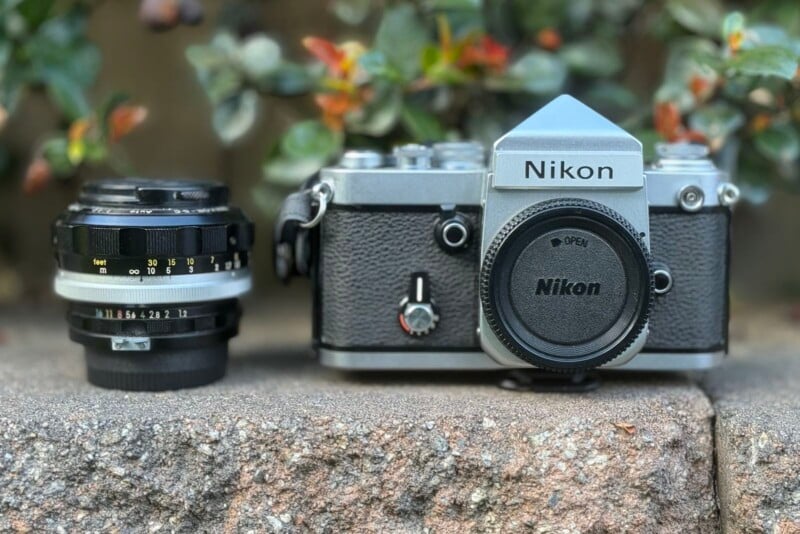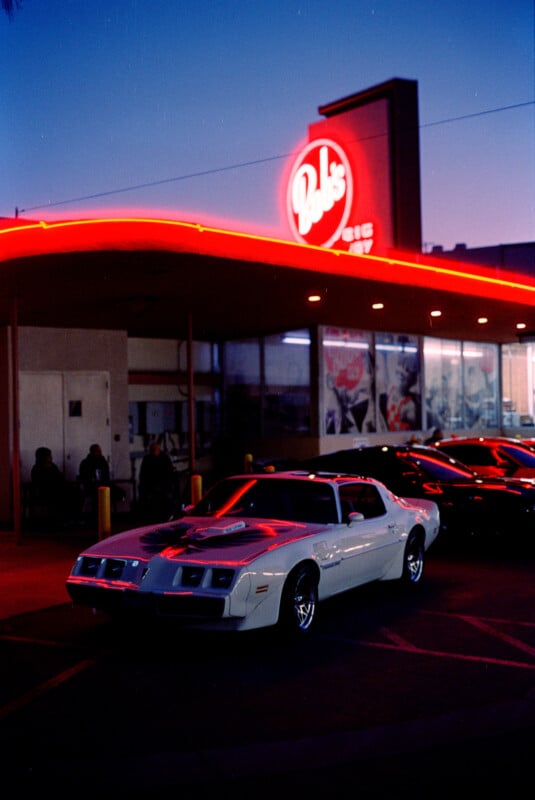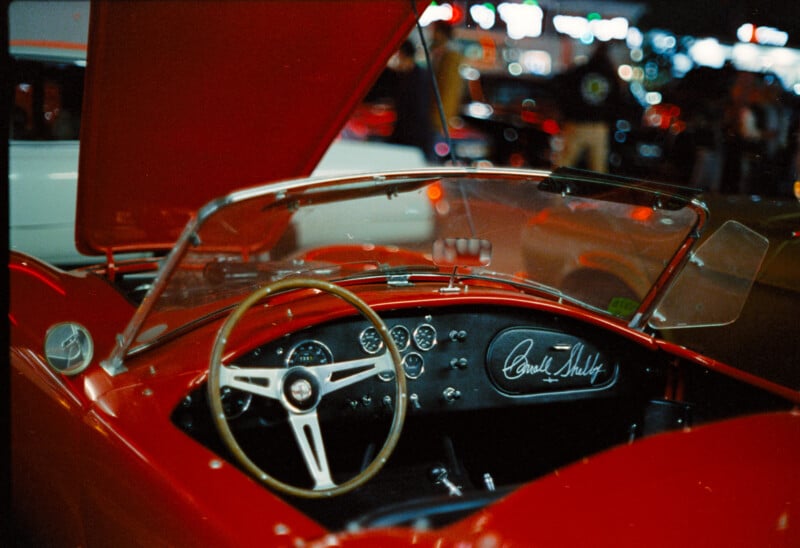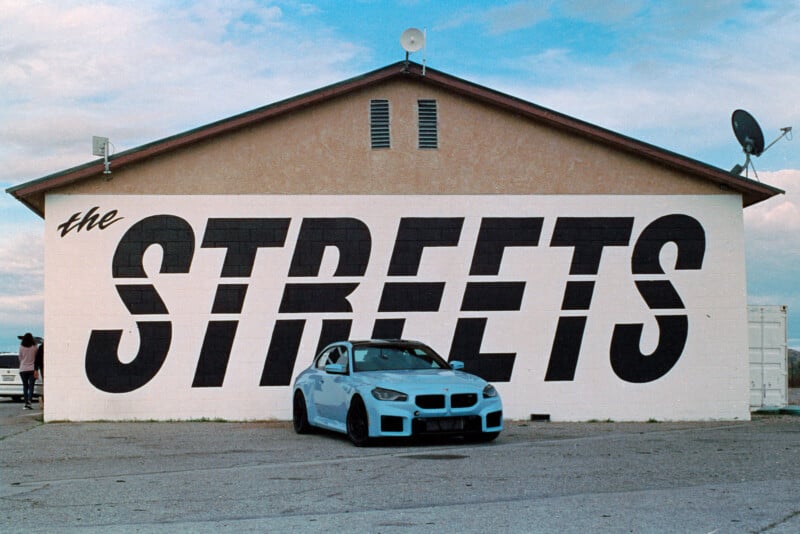When I was a freshman in high school, I signed up for a film photography class thinking it would be a good excuse to spend a good part of the school week and some homework time getting to goof around with a camera.
By that point, I had already commandeered the family DSLR, a Nikon D90, and my dad handed me his old Minolta Maxxum 7000 when I explained that I needed a 35mm SLR for school. At that time, Samy’s Camera had a location just a few blocks from school, in what used to be a model train shop I obsessed over as a kid, and I remember heading to the film counter after the final bell on the first day of class and buying an armful of Ilford HP5 Plus. Little did I know it then, but that moment would set me on course to making photography, video, and their associated disciplines a huge part of my life, and now a full-time job.
Nowadays, I’m very fortunate that I get to legitimately call myself a full-time professional photographer, and have access to much of the state-of-the-art equipment I used to stare at, wide-eyed with wonder, through the counter at photography shops or in YouTube videos. I’m grateful for every job I get called for and every booking I take, and I absolutely love what I do, but at the end of the day, this is a job, make no bones about it. It’s work, a lot of work, and in making it work, I’ve lost some of the magic that made shooting as an enthusiastic amateur special to me. In a single weekend, when I do most of my actual fieldwork, I might shoot upwards of 30,000 photos. As much as I love shooting, part of what I used to love more was the contemplative zen of needing to care deeply about every single frame, and with this kind of volume, you simply can’t.
And that is what led me to consider a return to film. When shooting digital, each photo is, as near as makes no difference, free. Even with a relatively small memory card, you can store thousands and thousands of photos at once, and most memory cards will last years before their chips wear out. Sensors are typically well into obsolescence before they stop working correctly, especially the CMOS sensors found in just about every modern DSLR and mirrorless camera. And that’s before you even consider a camera like my daily driver Z9, that doesn’t even have a shutter to break.
Not so on film. You basically have 36 individual frames per roll or even 24 on certain short rolls, and that’s it. After you account for purchasing film and either paying for processing or buying the supplies to do it yourself, you’re basically in for a couple of dollars per photo. Needless to say, you better think long and hard about clicking that shutter, and that forces a much more methodical and considered approach in everything from composition to camera settings. Perfect.
Retail Therapy
So I started shopping around. Since I’ve grown to be a Nikon fanboy-err, enthusiast-over my photography career, I decided I wanted to go for something truly old-school from their back catalog. Sure, an F5 or another relatively recent film body with auto-advance and a fancy metering system and whatnot would be OK, but then you’re basically just using a modern digital camera with an extra-small memory card and lots of extra hassle after you’ve actually taken the photo.
No, I wanted old. As in, “basically as far removed from a Z9 as you can go in an SLR” old. So I settled on a bog-standard Nikon F2, without so much as a light meter, widely considered to be the final iteration of the fully mechanical professional Nikon SLRs. To go with it, I decided on a Nikkor-S.C. 55mm f/1.2, for a good “standard” focal length and a very wide maximum aperture. After comparison-shopping a number of examples on eBay, I purchased from a couple of vintage camera stores in Japan, and just a few days later, they showed up at my door.

And they’re gorgeous. Aside from a bit of brassing on the sides of the camera body where it was held by previous owners, there’s almost no mark on either the camera or the lens. The serial number dates this particular F2 to being produced in the latter part of 1975, meaning it’s just about half a century old.
Eagerly, I visited Paul’s Photo to pick out some film, settling on a few different stocks but really wanting to try out CineStill 800T for some night work. It just so happened that the next day, there would be a large classic car show at a local drive-in diner, replete with neon lights to let the film shine. So, for the first time in over a decade, I loaded a roll into my shiny new Nikon and set to work.

Shot in the Dark
I’m not going to lie, this was a bit of an intimidating experience for me. Not only had it been a long time since I had shot a roll of film, but it was my first time ever shooting a roll of color film, and I didn’t want to waste shots. Having seen the sample shots of what CineStill 800T can do, I looked for anything and everything involving bright, localized light. This was a lot of fun, almost like a scavenger hunt for photons. What threw me the most was not being able to review anything I shot in any way-I’m so used to just hitting a button and seeing a more-or-less fully finished image, and not having that kind of real-time feedback was jarring.
I took somewhere between 20 and 30 shots that night, and after finishing the roll over the next few days, it came time to see whether all my hard work and effort had borne the fruits I’d hoped it would. Unfortunately, as anyone who shoots film will tell you, getting your shots developed and scanned can be extremely expensive, topping $30 per roll if you want high-resolution scans delivered sharpish. I did the math and realized that I would only have to shoot a relatively small number of rolls before I would break even on just buying the supplies to develop and scan it all myself.

So, that’s what I did. I purchased a development kit from CineStill that includes just about everything you could possibly need to develop both color and monochrome film (though I did purchase a bottle of Photo Flo separately since Los Angeles can have rather hard water), as well as a PlusTek 8300i AI film scanner, which my research told me was top-of-the-pack when it came to high-quality home film scanning.
This part of the process brought back so many memories of high school. Popping open the film canister and realizing you’re at the point of no return, first fumbling around for a bit in the changing bag and then the muscle memory of loading a spool returning, feeling like you’re crushing the development tank with how tightly you’re holding it shut to prevent disaster. Thankfully, I had done the research and came to the process prepared. The CineStill kit was very complete in its contents and instructions, and everything went about as well as it could have. 10/10, would recommend.

I’m delighted to report that my film came out of the development tank pretty much perfect. After allowing it to dry, I divided it up into strips and began feeding it through the scanner. The included SilverFast 9 AI Suite is a bit dated from a UX/UI perspective, but it gets the job done pretty well. It takes some tinkering and I still have quite a bit of learning to do, but the results I’ve been able to get already are much better than what I was expecting for a “home” setup, and absolutely good enough for me to feel comfortable publishing the images as my own professional work. In fact, I’ve already had someone buy a print of one of the shots on the first roll-go figure!

End of the Beginning
Overall, I’m absolutely delighted that I’ve decided to jump back into shooting film, and I’m definitely going to keep a loaded F2 in my backpack as often as I can. Yes, consciously I know that each image is nearly infinitely more expensive than shooting it digitally and that even the best film probably won’t be able to deliver the same image quality that my daily setup does, but that’s not what it’s about. I wanted to re-experience what drove me to love shooting in the first place, the idea that thought and consideration went into every image-that it exists because I affirmatively chose to bring it into being, not because I figured that I might as well snap the photo because “Who cares if it sucks? It’s free.”
If you’re in a bit of a creative or motivational rut, I cannot recommend this approach enough. If I’m honest, I think everyone should at least give film a shot. 35mm is certainly the most common, but thankfully there’s been enough of a film renaissance as of late that you could even do something really funky and go find yourself an ancient 120mm TLR for some large-format action. Creativity thrives when given constraints, and film provides an excellent set of constraints to challenge yourself.
